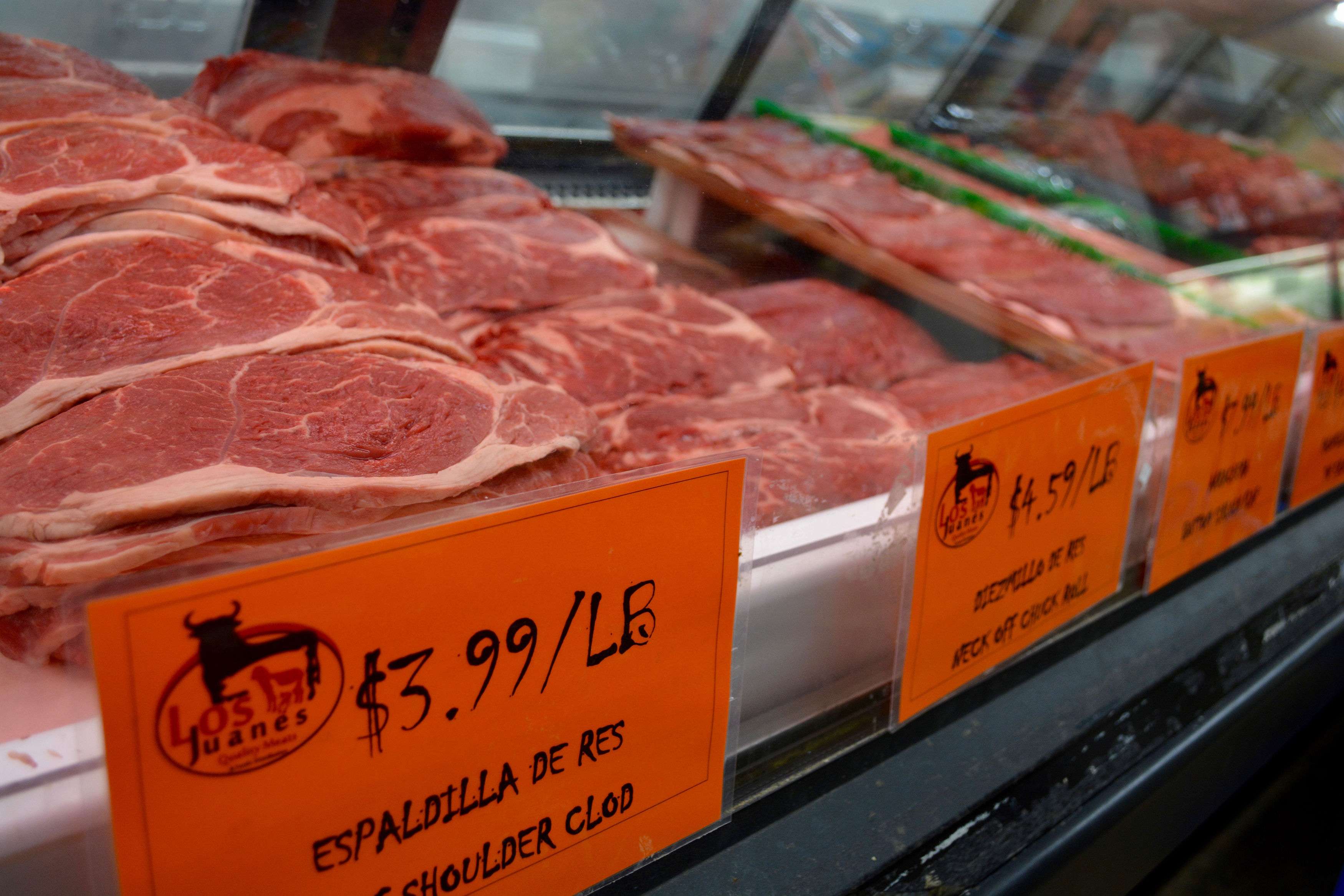See Bagley Farms Meat Market Edwardsville IL for Farm-Fresh Meat and Specialized Cuts
See Bagley Farms Meat Market Edwardsville IL for Farm-Fresh Meat and Specialized Cuts
Blog Article
Uncover the Art of the Butcher's Cut in a Modern Meat Market
In the ever-evolving landscape of modern-day meat markets, the butcher's cut has actually transcended its conventional roots, combining age-old workmanship with contemporary practices. What genuinely sets the modern-day butcher apart is their capability to forge a much deeper connection in between consumers and the beginnings of their meat.
Development of Butchery Strategies
The development of butchery techniques mirrors an abundant tapestry of development and adjustment driven by improvements in technology, adjustments in consumer need, and a deeper understanding of meat scientific research. Historically, butchery was a craft passed down with generations, with approaches developed over centuries to make best use of yield and flavor. However, the commercial revolution ushered in automation, transforming standard techniques and enabling massive processing.
The mid-20th century saw butchery methods additionally improved by scientific insights right into muscular tissue biology and meat aging, enhancing both tenderness and preference. Innovations like vacuum packaging and refrigeration prolonged item shelf-life, allowing butchers to diversify offerings and enhance top quality control. This duration also marked the rise of specific devices, such as band saws and meat slicers, which boosted accuracy and performance in meat processing.

Digital systems currently assist in monitoring animal provenance and optimizing cuts to fulfill certain client preferences. In addition, a renewal in artisanal butchery has actually emerged, mixing standard skills with modern expertise to cater to customers looking for honest and sustainable meat options.
Understanding Meat Cuts
Recognizing the ins and outs of meat cuts is vital for both butchers and consumers looking for high quality and worth. Each cut originates from a different component of the animal, passing on special flavors, appearances, and cooking approaches - bagley farms meat market edwardsville il. Mastery of these distinctions not only boosts culinary experiences yet likewise maximizes the energy of each carcass. For butchers, accurate cuts mirror skill and regard for the craft, ensuring very little waste and optimal return.

Recognizing muscular tissue make-up is essential; muscles made use of a lot more often by the animal often tend to be harder and are best fit for sluggish food preparation approaches, while less-used find out here now muscle mass, like those found in the loin, are more tender and perfect for barbecuing or roasting. Familiarity with these differences empowers consumers to make enlightened options, enhancing their cooking endeavors.
Picking High Quality Meat
Picking the best meat entails even more than simply picking an aesthetically enticing item from the display. The art of choosing top quality meat calls for a critical eye and understanding of specific characteristics that represent quality and excellence.
Secondly, take into consideration the marbling, which describes the white flecks of fat within the muscle mass. Correct marbling is a vital indicator of tenderness and flavor, as it melts throughout food preparation, enhancing the meat's juiciness. Keep in mind, higher marbling usually correlates with premium quality cuts, such as USDA Prime.
Structure is one more important factor; meat ought to feel solid to the touch, not slimy or excessively soft. Furthermore, be conscious of the fragrance. Fresh meat must have a tidy, neutral smell, devoid of any sour or repulsive smells.
Coupling Cuts With Food Preparation Approaches

Alternatively, tougher cuts like brisket and chuck roast are rich in collagen, which damages down right into gelatin when cooked slowly. These cuts are excellent for braising or slow roasting, enabling the meat to soften over time and establish deep, intricate tastes. Cuts such as brief ribs and pork shoulder make out well with slow-cooking approaches, where extended cooking times transform their robust textures into succulent meals.
Lamb shanks and oxtail, which call for long term food preparation to tenderize, are ideal candidates for cooking or slow-moving simmering. These approaches coax out abundant, hearty flavors while preserving wetness. By recognizing the one-of-a-kind characteristics of each cut, chefs and home cooks alike read this article can raise their cooking developments, making certain each recipe is both pleasing and remarkable.
The Butcher's Duty Today
Browsing the progressing landscape of the contemporary meat market, the butcher's role today extends beyond mere prep work of cuts. Contemporary butchers are culinary craftsmens, instructors, and advocates for lasting methods. They bridge the void in between the ranch and the fork by guaranteeing ethical sourcing, recognizing animal husbandry, and focusing on transparency in the supply chain. This shift mirrors the growing customer need for high quality over quantity, where provenance and pet well-being are critical.
In addition to crafting exact cuts, butchers now involve directly with clients, using cooking recommendations and tailoring choices to suit private demands and preferences. Their experience in meat aging, marbling, and flavor accounts encourages consumers to make educated linked here choices, enhancing their cooking experiences. This personalized service exemplifies the butcher's advancing role as a trusted consultant in the cooking area.
Furthermore, butchers are essential in decreasing waste, utilizing whole animals to produce varied items such as sausages and supplies. This extensive technique not just respects the animal however additionally aligns with contemporary sustainability objectives. In this means, the modern butcher symbolizes both custom and technology, adapting to an ever-changing market while preserving the creativity and honesty of their craft.
Verdict
Proficiency in recognizing varied meat cuts and top quality signs encourages butchers to offer enlightened referrals, aligning details cuts with optimal cooking approaches. By recognizing historical techniques while accepting modern demands, the butcher's duty stays vital in today's advanced meat market.
Report this page